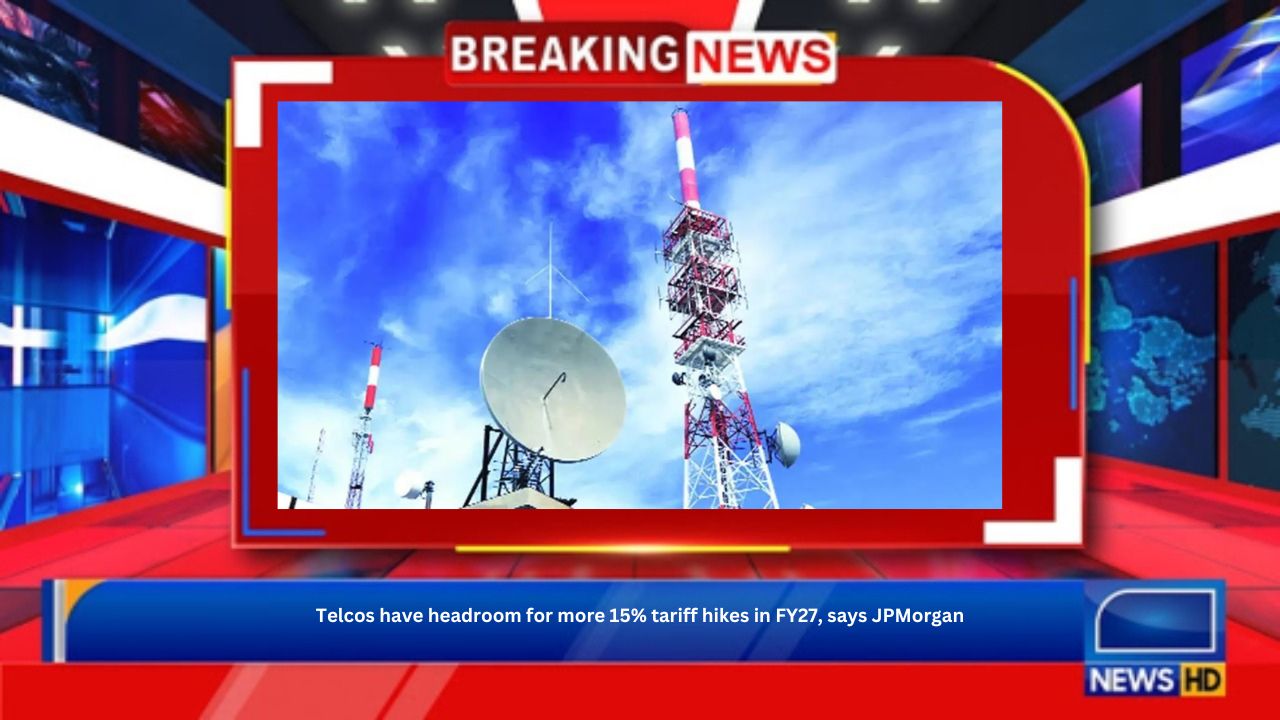The Indian telecom industry stands on the brink of significant changes as major players, including Bharti Airtel and Vodafone Idea, prepare to implement substantial tariff hikes. Recent insights from analysts at JPMorgan reveal that the regulatory landscape and competitive pricing strategies have created a conducive environment for a 15% increase in tariffs in FY27. These developments are poised to reshape the telecommunications market while impacting consumers, stakeholders, and investors alike. With India’s data pricing among the lowest in the region and the need for service providers to bolster their financial health, understanding the underlying factors driving these potential hikes is crucial.

The Current State of India’s Telecom Sector
Recent reports by JPMorgan indicate that telecom companies in India, particularly Vodafone Idea, are under increasing pressure to raise prices as part of a broader strategy to overcome substantial financial challenges. The Supreme Court’s recent decision has placed additional pressure on Vodafone Idea to address its outstanding dues related to Adjusted Gross Revenue (AGR) and spectrum fees, highlighting the urgency for structured pricing increases to ensure operational sustainability.
Understanding the Pricing Dynamics
A fundamental analysis reveals that India’s mobile data yields remain the lowest globally, with an average of just $0.09 per GB. The current Average Revenue Per User (ARPU), which stands at about 0.7% of GDP, reflects a pricing model that is misaligned with economic growth patterns. For substantial investments in infrastructure and new technologies, a revision in tariffs is not just beneficial; it is essential.
| Telecom Company | Current ARPU (% of GDP) | Predicted Tariff Hike (%) |
|---|---|---|
| Bharti Airtel | 0.7% | 15% |
| Vodafone Idea | 0.7% | 15% |
| Bharti Hexacom | 0.7% | 15% |
| Indus Towers | N/A | N/A |
Projected Impacts of Tariff Hikes
JPMorgan’s analysts have noted that the anticipated 15% increase in tariffs will strategically provide headroom for telecom companies to recuperate revenue losses while meeting the operational costs associated with their services. The introduction of these tariff increases is expected to enhance overall EBITDA margins, particularly for Bharti Airtel and Bharti Hexacom, projecting margins to improve by approximately 50 basis points by FY27.
Company-Wise Projections
Bharti Airtel’s Dominance
Bharti Airtel has emerged as a top choice for investors, with JPMorgan forecasting a significant increase in revenue and a robust EBITDA gain in the coming fiscal year. The company’s strong market position, combined with a notable surge in ARPU driven by the tariff hike, is likely to reflect positively on its share price, raising the price target from ₹1,670 to ₹1,920.
Vodafone Idea’s Path to Recovery
Facing myriad financial challenges, Vodafone Idea is expected to undergo a transformation propelled by the proposed tariff hike. While the brokerage improved its rating from Underweight to Neutral, the share price target has been set to rise from ₹7 to ₹10. As the company maneuvers through a recovery phase, its strategic focus on capturing subscriber growth while managing its debt—primarily through capital expenditure—will be critical.
How the Market Reacts: Subscriber Trends
Despite predictions of subscriber loss due to the tariff increase, analysts remain optimistic about overall revenue growth. Bharti Airtel, for instance, is expected to report a 6.7% sequential growth in wireless revenue in Q2 of FY27, despite the potential loss of 1.2 million subscribers. Similarly, Vodafone Idea is projected to experience a 5.7% revenue increase, attributed mainly to an 8% growth in ARPU, despite a loss of 4 million subscribers.
| Telecom Company | Expected QoQ Revenue Growth (%) | Projected Subscriber Losses (Millions) |
|---|---|---|
| Bharti Airtel | 6.7% | 1.2 |
| Vodafone Idea | 5.7% | 4.0 |
| Bharti Hexacom | 6.1% | 0.2 |
| Indus Towers | 4.0% | N/A |
Future Outlook: A Balanced Approach
The outlook for FY27 remains cautiously optimistic as telecom operators navigate pricing pressures and regulatory challenges. As indicated by analysts, the tariff hikes are a necessary step for maintaining competitiveness in an environment that demands continual investment in infrastructure and technology. The dynamic nature of the Indian telecom market, influenced by both regulatory frameworks and changing consumer expectations, will necessitate a strategic focus on enhancing service quality alongside pricing adjustments.
Conclusion: A Call for Strategic Investments
Looking ahead, the telecom sector’s resilience will depend not just on pricing strategies but also on innovation and service enhancement. Companies like Bharti Airtel, Vodafone Idea, Indus Towers, and Bharti Hexacom must ensure they remain aligned with market trends, customer needs, and regulatory requirements while capitalizing on growth opportunities driven by tariff hikes aimed at restoring balance sheets, improving ARPU, and fostering long-term sustainability.
FAQs
What is the reason behind the 15% tariff hike?
The 15% tariff hike is primarily aimed at enabling telecom companies to address financial challenges, including outstanding dues from the Supreme Court decision regarding Adjusted Gross Revenue (AGR).
Will consumers experience any immediate changes in their billing?
While the tariff hike will be implemented in FY27, consumers can expect gradual changes in billing as companies adjust their pricing strategies over time.
How does India’s data pricing compare to other countries?
India’s data pricing is currently among the lowest in the world at $0.09 per GB, much lower than the average in many other Asian nations.
What impact will the tariff hike have on subscriber growth?
Despite the potential tariff hikes leading to some subscriber losses, companies like Vodaphone Idea anticipate a rebound in revenue driven by improved ARPU.
Are there any upcoming trends to watch in the telecom sector?
Key trends to observe include increased investments in infrastructure development, adoption of new technologies, and shifts in consumer expectations toward service quality and pricing flexibility.
